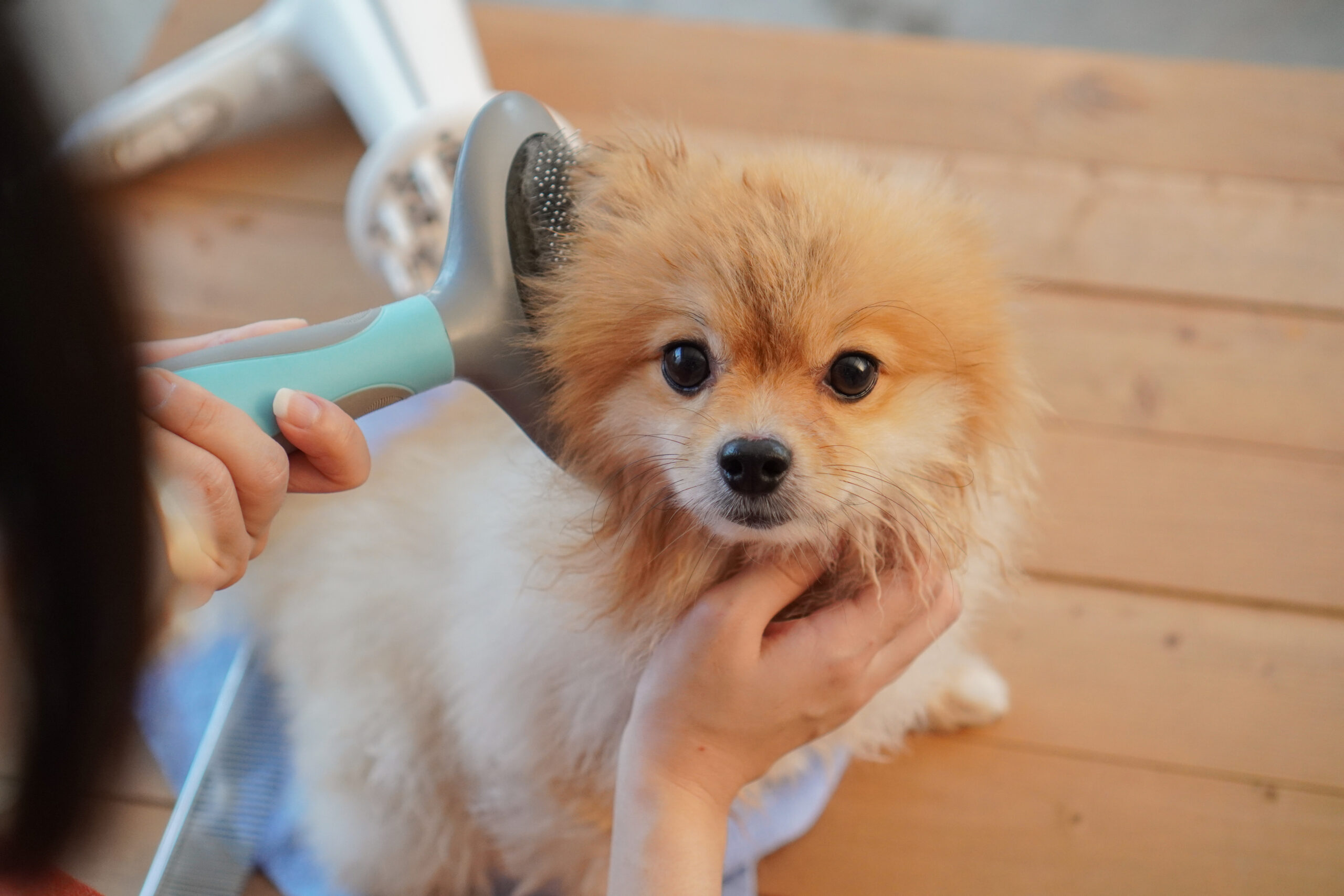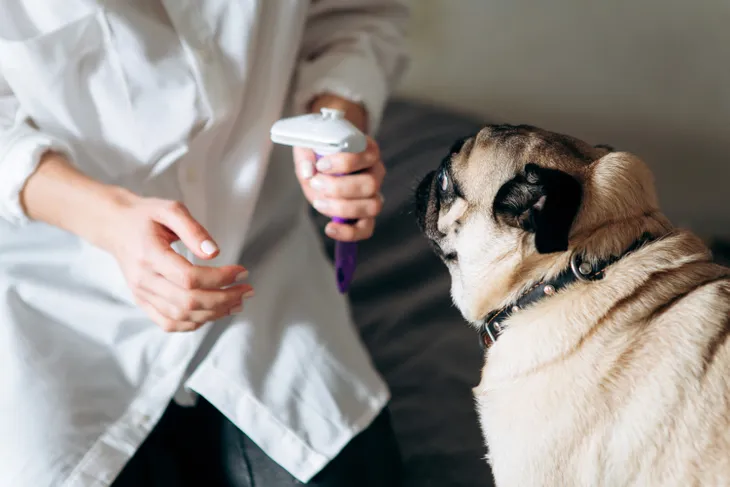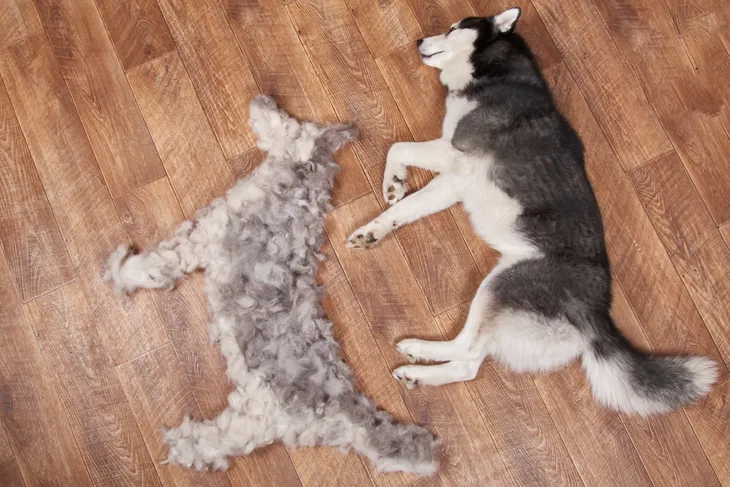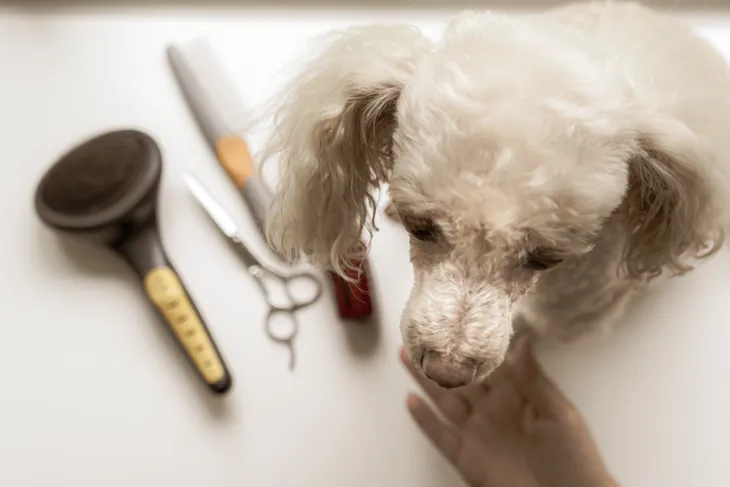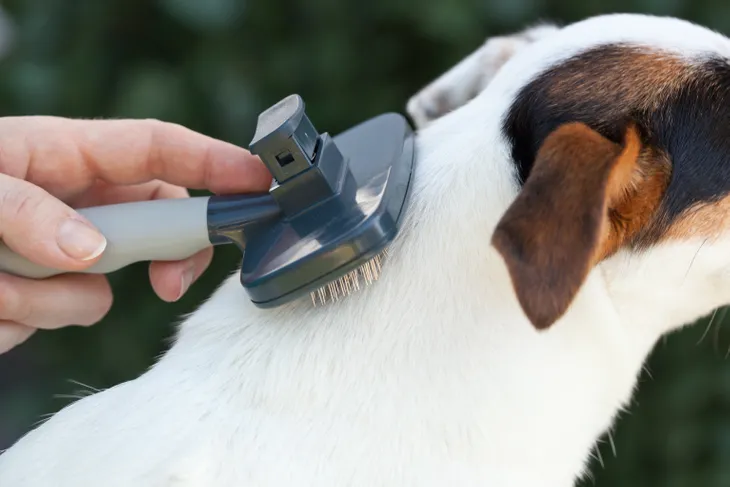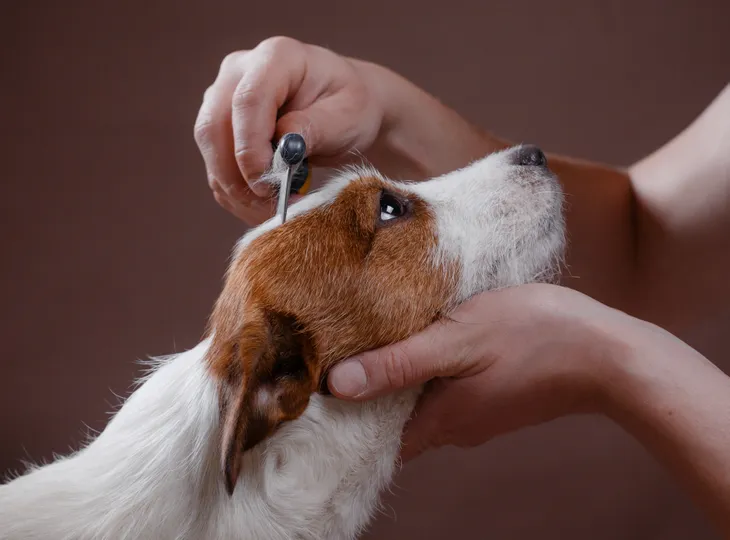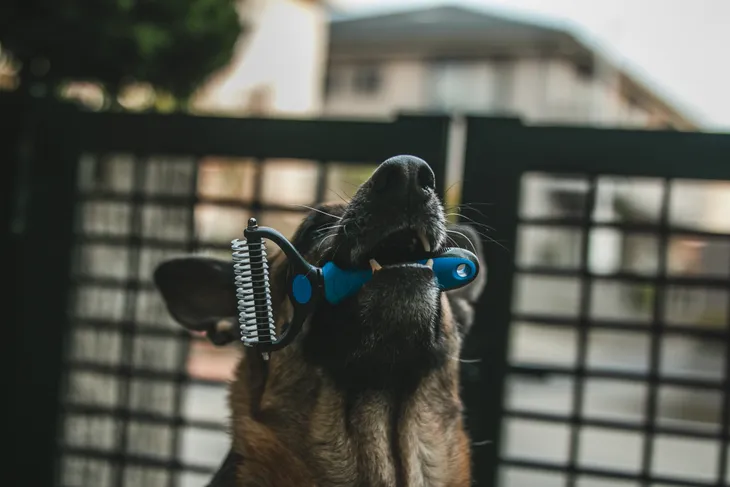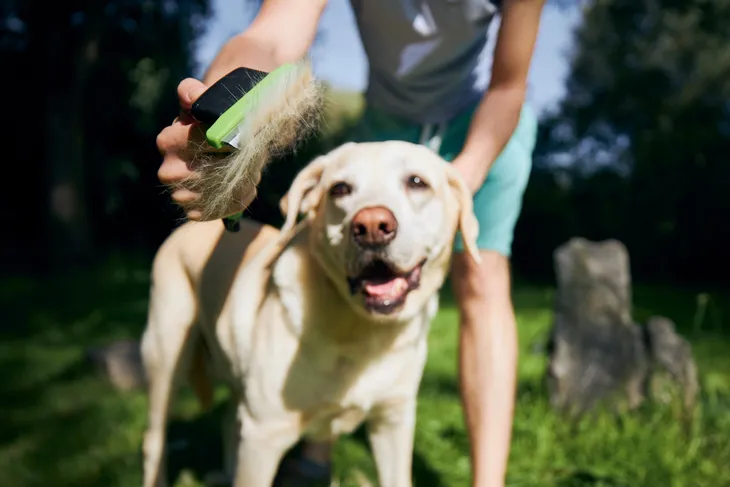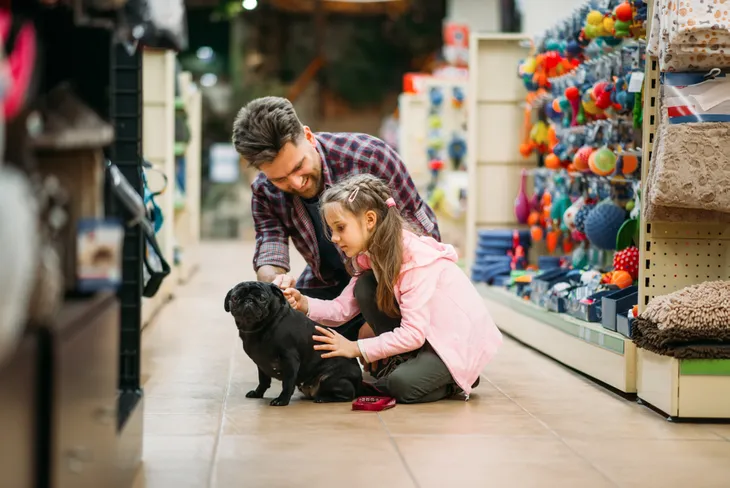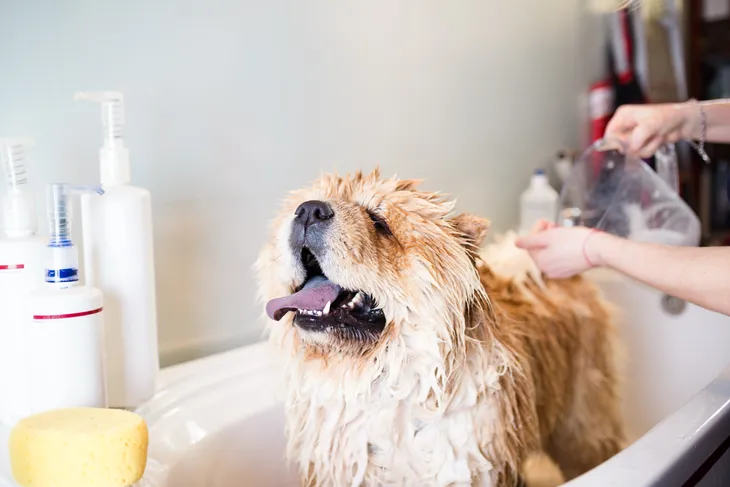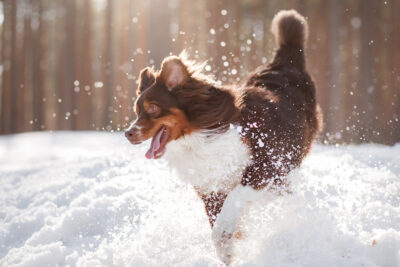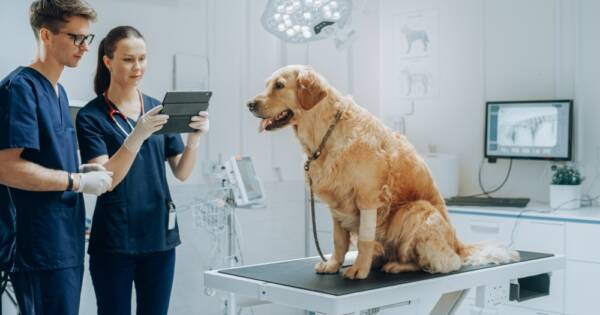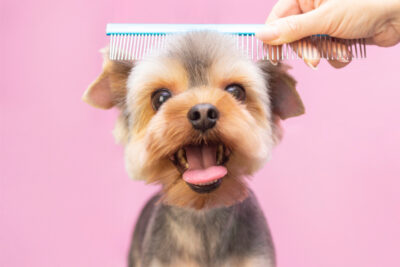- Grooming has the dual benefit of keeping your dog from shedding as often and allowing you to find and treat fleas, bug bites and skin conditions.
- There are tons of grooming products available, and each one is meant for a specific type of dog or coat.
- Just as dogs come in a wide variety of shapes and sizes, they also have many different hair and coat types.
- Professional grooming is helpful, but you should still brush your dog at least once every week, depending on the breed.
If you want to keep your dog happy and your home free of dog hair, regular brushing can certainly help. Dogs love the attention, and it feels wonderful from their perspective, once they get past the initial phase of learning and desensitization. There are many grooming products on the market, and you may be confused by all the different categories and types of brushes you see in the store. This guide will help you choose the best one for your dog.
What Type of Hair Does Your Dog Have?
This is an important question because grooming brushes are designed for different types of dog hair. Your dog’s coat can be defined by two important traits: length and texture. Sometimes, you can tell what type of coat your dog has just by touching and looking at it, but there’s no shame if you need to look through the AKC breed guide to answer this question. Here are the most common coat textures:
Silk Coat
Silk-coated dogs have very soft, shiny hair when they’re properly groomed, and their hair length ranges from very short to long. Silk coats can tangle easily, so it’s important to bathe and groom these dogs routinely to keep knots and mats from forming. Common breeds that have a silk coat include Yorkshire Terriers and Cocker Spaniels.
Smooth Coat
Also referred to as short-coated dogs, dogs with a smooth coat rarely require intense brushing because they don’t have much hair. As the name indicates, these dogs have coats that are smooth to the touch, and they don’t shed much. You should still groom them about once a week to protect their scalp. Common breeds that have a smooth coat include Greyhounds, Beagles and Pugs.
Double Coat
Dogs with this coat type have an undercoat and a topcoat. The undercoat keeps them cool in the summer by allowing moisture to evaporate. However, these types of dogs have longer hair and shed constantly. Brushing them does a huge service because it pulls all the dead hair and skin out from their undercoat and scalp. Common breeds that have a double coat include Huskies, Border Collies and Corgis.
Wool Coat
People with allergies turn to wool-coated breeds, so they can experience the joys of pet ownership without the itchy eyes, sneezing and runny nose. They’re hypoallergenic because they hardly shed, which is great for owners who can’t tolerate pet dander. Contrary to popular belief, they still need to be groomed, even though they don’t shed. Common breeds that have a wool coat include Bichon Frises, Poodles and Poodle crosses, like the popular Goldendoodles.
Wire Coat
If your dog’s coat is slightly prickly, you’ve got a wire-coated dog. Just like wool-coated breeds, these dogs don’t shed very often. However, grooming them can be a challenge, especially if you’re not using the right type of brush. They’re also prone to skin conditions, so you shouldn’t groom or bathe them too often. Most terrier breeds have a wire coat.
Types of Dog Grooming Brushes
Once you know what type of coat your dog has, you can choose the right type of brush for their specific hair type. Grooming has countless benefits, such as reducing shedding and pulling out tangles and mats. When brushing your dog, you can also check for signs of flea bites and skin conditions that require veterinary attention. Here are the types of brushes available:
Traditional Brush
For a long time, this was the primary tool most people used to brush their dogs. When choosing a brush, keep in mind that different coats require slightly different care.
- Pin brushes are the most versatile choice and help remove tangles and mats when used on medium- to long-haired dogs. They’re also easier on wool coats than other choices.
- Rubber brushes look like gloves and are great for dogs that won’t allow you to brush them because you wear them while petting your dog. Your dog thinks they’re getting coddled while you detangle their hair and pull out some of the shed. These brushes are great for all types of coats.
- Slicker brushes have many fine wire bristles and are most useful if your dog gets a lot of mats and tangles in its hair. They pull out loose hair and act as a sort of comb.
Grooming Combs
If your dog has an undercoat or longer hair, a comb can help you tackle tangles and mats before you give a final comb-over to fluff or style your dog’s hair. As a rule of thumb, you should choose a comb that comes with widely spaced teeth on one side and compact teeth on the other. The wider teeth are for pulling out mats, while the thin side can help you check for and remove fleas.
You may want to buy a flea comb if you’re especially worried about fleas due to excessive scratching and pawing. These are very fine-toothed combs, so you’ll actually notice fleas or bugs on the teeth if they’re present on your dog’s skin. If you do find a tick or flea, discuss treatment options with a veterinarian. Flea and tick treatments may require a prescription.
Rakes
As the name suggests, a grooming rake looks like a tiny handheld rake. Don’t use these if your dog has short hair, as they’re designed for medium to long hair and can irritate a short-haired dog’s skin. There are two types of rakes to consider:
- Standard rakes are great for most coat types, but they’re most effective if you have a wool-coated, silk-coated or double-coated dog. The ends are rounded to prevent skin irritation, but you should do your dog the favor of being gentle. In addition to acting as a sort of comb for detangling, they pull all the dead hair and skin out of your dog’s coat.
- Undercoat rakes should be used with care because they cut hair out from the undercoat using tiny, curved blades. These rakes are best for taking on large mats of hair because they can cut through the tangled mass, so you don’t have to cut the hair away with sheers.
Shedding Brushes and Tools
If you’re concerned about shedding, you can look for special shedding tools and brushes for coats of all types and lengths. It’s important to pay attention to the specifications of the tool before you buy it because each tool is designed for specific hair types. If you choose the wrong size, the grooming experience could be very unpleasant for your dog.
Puppy Brushes and De-Shedding Tools
You shouldn’t use tools meant for adult dogs on a puppy because they’re still developing their full coats. Everything designed for puppies is meant to be gentle, from brushes with special bristles to shampoos that won’t irritate their eyes. Keep in mind that your puppy will outgrow the tools you use, so look for a replacement brush and shedding tool when they’re about 12-18 months old.
Additional Care Tips
Your dog’s grooming doesn’t begin or end with regular brushing. Some dogs should be bathed on a regular basis, while over-bathing others will dry out their skin. As a rule of thumb, double-coated or long-haired dogs require more frequent baths than dogs with wire or wool coats. Consider taking your dog to a professional groomer a few times a year to get them trimmed and styled, but make sure the groomer you choose knows their stuff.
For example, you might think that shaving a dog’s coat is helpful during the summer. This can be helpful for some dogs, but it’s not good for double-coated dogs because their undercoat helps keep them cool. The AKC is a great source of information if you want to know more about your dog’s care needs. The Breed Guide includes care advice, such as how often to groom your dog and other considerations you can make to give them a happy and healthy life.
